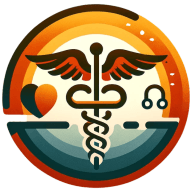What Technology Has Improved Efficiency in Healthcare?
Imagine a world where healthcare efficiency isn't just a goal but a reality, driven by groundbreaking technology. In this article, insights from a CEO and a Medical Director shed light on the technologies that are transforming clinical environments. Starting with the implementation of an EHR system and concluding with the utilization of clinical-management software, these experts share six pivotal innovations. Each contribution not only highlights the technological advancements but also the profound impact they have on daily operations.
- Implement an EHR System
- Use AI-Powered Predictive Analytics
- Adopt Electronic Health Records
- Switch to Digital Radiography
- Integrate AI with EHR Systems
- Utilize Clinical-Management Software
Implement an EHR System
As the CEO of Riveraxe LLC, a healthcare IT solutions provider, implementing an electronic health record (EHR) system has significantly improved efficiency and productivity. Our EHR provides a holistic view of each patient in one place, reducing paperwork and duplication. Physicians have cut diagnosis and treatment decision times in half, allowing them to see 20-30% more patients.
Administrative tasks like billing and scheduling are automated, freeing staff to focus on patient care. Real-time data in the EHR enables data-driven decisions to optimize workflows. We used insights to redesign the admissions process, shortening wait times from 2 hours to 30 minutes.
The EHR minimizes medical errors by up to 40% in our hospitals. With digitized records and order entry, illegible handwriting and incomplete information are eliminated. Clinical decision support provides evidence-based treatment guidelines customized for each patient. Our physicians have real-time access to critical information like drug interactions or patient history from anywhere.
Continuous improvement of technology and workflows is key. We work closely with physicians and staff to refine and improve the EHR, finding new ways to boost productivity, quality of care, and patient satisfaction every day. For any healthcare organization, an EHR can transform operations by reducing inefficiency, improving outcomes, and empowering providers with the information they need whenever they need it.
Use AI-Powered Predictive Analytics
One standout piece of technology that has transformed efficiency in our workplace is our AI-powered predictive analytics software. This tool allows us to anticipate patient needs by analyzing historical data, which has proven invaluable in our healthcare setting.
For example, during my time managing a clinic, we noticed that certain patient populations had higher admission rates in the winter months due to flu outbreaks. With this insight, we adjusted our staffing and resource allocation, ensuring we had enough personnel and supplies on hand during peak times. Implementing this technology significantly reduced wait times for patients and improved staff satisfaction since everyone felt less rushed and overwhelmed.
Moreover, the predictive analytics software has enhanced our ability to provide personalized care plans. By examining individual patient data, we can now predict potential health risks and recommend preventive measures tailored specifically to each patient. I've experienced how this proactive approach fosters stronger patient engagement, as they appreciate receiving care that directly addresses their unique circumstances. Patients not only feel more valued but are also more likely to adhere to treatment recommendations, leading to better health outcomes. For me, the integration of this technology has fundamentally transformed our workflow and patient interactions, allowing us to deliver higher-quality care more effectively.

Adopt Electronic Health Records
One piece of healthcare technology that has significantly improved efficiency in my workplace is Electronic Health Records (EHRs).
EHRs have transformed how we manage patient information by providing instant access to critical health data. This technology eliminates the inefficiencies associated with paper-based records, allowing healthcare providers to retrieve patient histories, lab results, and treatment plans quickly. As a result, care teams can coordinate more effectively, which is essential for delivering timely and accurate care.
Moreover, EHRs streamline administrative processes. They reduce the time spent on paperwork and phone calls for information exchange, enabling staff to focus more on patient care rather than administrative tasks. Studies have shown that practices utilizing EHRs not only experience higher revenue but also lower operational costs due to optimized workflows.
In addition, EHR systems enhance the quality of care by ensuring that all healthcare providers involved in a patient's treatment have access to the same up-to-date information. This continuity is crucial for making informed decisions and improving patient outcomes. Overall, the implementation of EHRs has been a game-changer in enhancing both operational efficiency and patient care quality in our healthcare setting.

Switch to Digital Radiography
In my dental practice, one piece of technology that has drastically improved efficiency is the implementation of digital radiography. Traditional X-rays were time-consuming and required chemical processing, which added delays in diagnosing and treating patients. With digital radiography, images are available instantly, allowing me to review and discuss treatment options with patients during the same visit. This has significantly cut down on appointment times and improved patient satisfaction.
Additionally, digital radiographs are easily stored in electronic health records, which makes them accessible at any time without the need for physical files. This integration into the patient's digital chart streamlines the workflow, reduces clutter, and makes consultations more seamless. It's a game-changer in providing efficient, high-quality dental care.

Integrate AI with EHR Systems
Hello,
I am John Russo, a VP of Technology Solutions at OSP Labs.
Working in the health tech industry for the last couple of years, I've witnessed several developments in healthcare. However, not all technologies have proven effective; some tend to wear off after a couple of years, while some scale up and improve over time. One recent development in EHR turned out to be quite impressive. Well, EHRs have been here for a long time now, but the new twist is the integration of AI.
Aiming to make things better, AI-integrated EHR systems have proven to boost efficiency and make clinicians' jobs easier. The EHR biggie, Epic, announced its updates this year, which revealed the integration of AI to enhance its features. Similar to Epic, several other EHR vendors have also integrated AI capabilities with their EHR systems.
I've delivered several EHR-integrated projects for various clients across the U.S. Perhaps, I feel the integrated AI bot with the EHR system case has significantly improved the client's overall operations. I advocate for this integration owing to its numerous benefits. This integration enables automated and accurate documentation so that doctors can focus only on patient care. AI algorithms also help providers analyze patient data and identify risks and threats on time. AI also helps clinicians with smooth data retrieval that enables streamlined decision-making.
I feel this integration with EHR is much needed today, especially in chaotic healthcare systems. It will not only improve efficiency but also reduce costs while reducing the work pressure of clinicians.
Best regards,
John
https://www.osplabs.com

Utilize Clinical-Management Software
One piece of healthcare technology that has significantly improved efficiency at The Alignment Studio is our use of clinical-management software that integrates patient scheduling, electronic health records, and communication tools. Before implementing this system, managing appointments and patient records across multiple services such as physiotherapy, Pilates, massage, and podiatry was time-consuming and often led to delays or miscommunication. With over 30 years of experience in both private practice and larger sports clinics, I knew that streamlining operations was essential for providing a seamless patient experience. The introduction of this system has allowed us to consolidate all patient data in one place, making it easier for our multidisciplinary team to collaborate. This not only improved our workflow but also enhanced the quality of care we provide by ensuring that every practitioner has real-time access to patient history, treatment plans, and progress notes.
A specific example of how this technology made a difference involves a patient who was recovering from a complex shoulder injury. The patient required a coordinated approach, involving physiotherapy, Pilates, and massage therapy. Previously, this would have required manual communication between practitioners, but with the new system, we were able to track the patient's progress across all disciplines instantly. The physiotherapist could easily review the Pilates instructor's notes, and the massage therapist had access to any adjustments in the treatment plan. As a result, the patient experienced faster recovery, and our team could adapt the rehabilitation approach more efficiently. My years of experience in the field and leadership roles at institutions like The Mater Hospital and UNSW were critical in recognizing the need for this integrated approach and selecting the right technology to make it happen.



